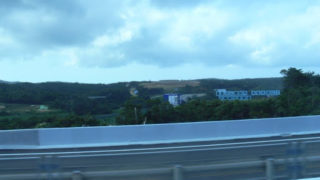 Dam in Okinawa Prefecture
Dam in Okinawa Prefecture2905-Kinjo Dam
The embankment is made of Ryukyu limestone, a material unique to Okinawa. It is the very wall of Shurijo Castle. It is said that the design of the river was inspired by the nearby Shuri Castle. The river is unusually narrow. The river is unusually narrow, so it has often been plagued by floods when it rains heavily. The river flows through the center of Naha City and Kokusai-dori Street, so you can see how important this dam is. / Gravity concrete dam / 19m









